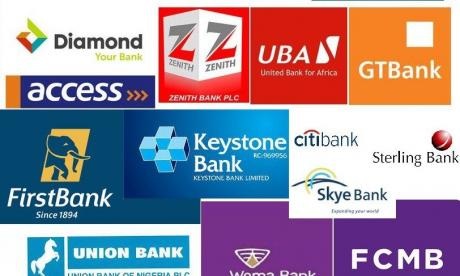Nigerian banks may find it difficult to sustain their profitability this year given the reduction in treasury bill yields, which many of them depended heavily on last year to shore up their earnings,
The recent revelation that the level of banking sector non- performing loans (NPLs) declined from as high as 16.21 per cent in February 2018, to 14.15 per cent as of April 2018, is something to cheer. But despite the positive development, commercial banks have remained apathetic about lending to the private sector as credit to the sector continues to shrink.
To analysts, the banks have remained cautious in risk assets creation because the Nigerian economy is yet to fully recover from the economic recession it suffered about two years ago. The expectation is that the operating conditions of the financial institutions will remain challenging over the next 18 months, as the economy slowly recovers.
Also, Fitch Ratings had projected that given the reduced yield on treasury bills, banks would struggle to remain profitable this year as such the financial institutions would definitely limit their risk appetite so as not to be caught off guard.
The federal government had announced plans to refinance some maturing domestic debts with external borrowings. Owing to this, the government has since slowdown on its fixed income securities issuance which led to a significant drop in interest rate from around 18 per cent to about 10 per cent presently.
Widening Gap
Clearly, the full year 2017 audited results of banks reviewed by THISDAY showed that the gap between the tier 1 and tier 2 banks in the country, in terms of market share, has continued to widen.
A review of the audited results of 13 banks, comprising the five tier 1 banks and eight tier 2 lenders, showed that the tier 1 banks continued to control a significant chunk of the market in terms of assets, gross earnings, loans and advances and customer deposits.
The tier 1 bank results reviewed were those of Zenith Bank Plc, Guaranty Trust Bank (GTBank) Plc, United Bank for Africa (UBA) Plc, FBN Holdings Plc and Access Bank Plc.
On the other hand, the six tier 2 bank results reviewed comprised Fidelity Bank Plc, Stanbic IBTC, Sterling Bank, First City Monument Bank (FCMB), Ecobank, Diamond Bank, Union Bank and Wema Bank.
The review showed that the total assets of the 13 banks increased to N37.801 trillion at the end of 2017, higher than the N33.997 trillion recorded in 2016.
But the five tier 1 banks listed above, at N22.355 trillion, accounted for 59 per cent of total assets in 2017, while the total assets of the tier 2 lenders stood at N15.446 trillion during the same period.
Also, while the 13 banks realised combined gross earnings of N4.558 trillion in 2017, up from N3.829 trillion from the previous year, the five tier 1 banks alone accounted for N2.681 trillion or 59 per cent of total earnings in 2017.
Findings also showed that total loans and advances of the 13 banks stood at N15.938 trillion in 2017, lower than the N16.030 trillion recorded in the previous year.
Similarly, while total customer deposits of the 13 banks stood at N23.096 trillion in 2017, higher than the N21.727 trillion they realised in the previous year, at N13.321 trillion, the five tier 1 banks accounted for 57 per cent of total customer deposits.
The tier two banks, on the other hand, posted combined customer deposits of N9.775 trillion or 43 per cent in 2017.
Managing Director, Afrinvest Securities Limited, Mr. Ayodeji Ebo, attributed the yawning gap between the tier 1 banks and tier 2 banks to the fact that the bigger Nigerian lenders have been riding on economies of scale and larger branch networks.
“Because of these, the tier 1 banks have been squeezing out their tier 2 counterparts. What the latter can do is to ride on technology to improve their market share,” he explained.
Net Interest Income
Also, the full year 2017 audited results of the 13 commercial banks showed that they raked in a total of N2.013 trillion through net interest income (NII) as they took advantage of the high yield environment for fixed income securities last year to boost their profits.
The amount realised by the 13 banks represented an increase by 11 per cent, compared with the N1.799 trillion they made in 2016.
A breakdown of this showed that while FBN Holdings’ NII increased to N321 billion in 2017, up from N304 billion in 2016; GTBank’s NII also climbed to N327 billion in 2017, up from N262 billion the previous year; Zenith Bank’s also increased from N240 billion in 2016, to N257 billion last year; UBA’s from N165 billion in 2016, to N207 billion last year; Ecobank Group’s NII rose to N299 billion in the year under review, from N284 billion the previous year; and Access Bank’s from N117 billion the previous year, to N130 billion last year.
Nevertheless, the situation may be different in the 2018 operating year as the ‘free lunch’ appears to have come to an end following the federal government’s reduced domestic borrowing, in line with its debt management strategy.
Fees and Commission to the Rescue
The results showed that the 13 banks raked in N655.669 billion from fees and commission income last year. The amount realised by the banks represented an increase by 11 per cent, compared with the N591.987 billion they realised in 2016.
Analysts have predicted that the financial institutions would be aggressive in fees and commission income going forward, as they continue to contend with the reduced yields on treasury bills.
The fees and commission income by the banks were derived from account maintenance fees, fees from electronic banking channels, ATM charges, letters of credit commission, remittances fees, card-based fees, fees from brokerage commission, financial advisory fees, among others.
Analysts’ Opinion
For analysts at Coronation Merchant Bank, the ability to support risk asset creation in the real sector will differentiate winners from losers in the Nigerian banking industry over the next three years.
The investment bank noted that while the quality of asset in the industry was improving generally, the best capitalised banks will move well ahead of their competitors.
According to the Head of Research, Guy Czartoryski, “For two years, Nigerian banks have had an easy time, earning good income on risk-free government-backed, Naira-denominated securities.”
“That era is drawing to a close as T-bill rates fall. Asset yields are trending south, and it is almost impossible to re-price liabilities to match. So, banks must either find other sources of income or face an average 15 per cent drop in their profits before tax expectation for 2018.
“For the banks to replace the portion of income threatened by declining yields on securities, they must grow risk-weighted assets. This means a 6-12 per cent rise in customer loans in 2018.”
However, analysts at Renaissance Capital Limited, had predicted a loan growth of 10 per cent for the sector. But, it pointed out that the appetite to create new foreign currency assets remains relatively weak, saying that loan growth would largely be driven by the local currency book.
“Capital constraints remain a challenge for some of the smaller banks, but we are not concerned that re-allocation of assets in favour of loans will put material pressure oncapital adequacy ratio (CAR)), as we expect the banks to lend cautiously,” the firm stated.
“Against the backdrop of a falling interest rate environment, and the expectation of cautious lending among the Nigerian banks, we believe resilience in earnings will be key in full year 2018. Specifically, we believe that the investment thesis of the Nigerian banks in full year 2018 largely hinges on the improving asset quality outlook,” the report added.
On their part, Fitch stated that its 2018 rating outlook for the Nigerian banking sector was negative, forecasting that some tier 2 banks would struggle to remain profitable this year.
To Moody’s Investors Service, declining yields on government securities would dampen banks’ core earnings.
“We expect return on assets of around two per cent in 2018, due to declining yields on government securities. Declining yields will be partially offset by increased non-interest income and lending growth.
“Additionally, some banks will continue to generate high earnings through derivative and swap transactions, although we expect these earnings to decline significantly over the next 12 months,” Moody’s added.
In its latest report however, Moody’s predicted that Fidelity Bank Plc (Fidelity), Union Bank of Nigeria Plc (Union), First City Monument Bank Limited (FCMB), Sterling Bank Plc, and Diamond Bank Plc (Diamond) — will grow their earnings materially over the long-term.
“Nigerian mid-tier banks suffered more severely than the top five largest banks from the 2016 recession and are still recovering, “the Vice President and Senior Credit Officer at Moody’s, Akin Majekodunmi said.
“Over the longer term, though, we expect their earnings growth prospects to be positive.”
Moody’s viewed Fidelity, FCMB and Union Bank as best positioned to weather current operating challenges, given their sound capital and liquidity buffers.
“Loan performance for the mid-tier banks has deteriorated in recent years but it is likely to stabilise because most foreign-currency loans and loans to the oil and gas sector have been restructured,” it added.
It noted that sound capital buffers, which compared favourably to global peer averages, mitigated some of the banks’ high asset risks.
It added: “Most banks also hold sufficient liquidity to cover upcoming foreign currency obligations; only Diamond and Fidelity have Eurobonds outstanding, while all five banks have bilateral foreign-currency debt outstanding.
“Profitability, though, is likely to remain subdued over the next 12-18 months, with an average net income to assets ratio of just one per cent due to a reduction in the yields of government securities, muted loan growth and high provisioning costs. Over the longer term, however, the earnings potential for Nigerian mid-tier banks, and the country’s wider banking sector, is positive.”
Beside these, for 2018 and beyond, Nigerian banks would also have to contend with increased regulations, disruptive models from financial technology companies, threats of cybercrime as well as intense competition in the industry.
Therefore, financial institutions that can address these emerging challenges and utilise the opportunities in the system would be the winners.














